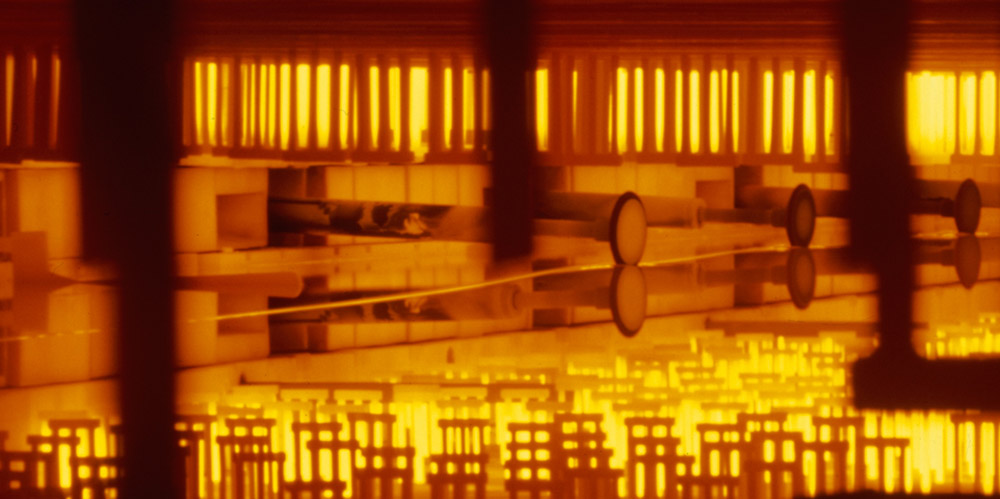Float glass revolutionised the window glass market in 1959.
The English glass manufacturer Pilkington Brothers Ltd. was the first to produce perfectly smooth, uniform and non-distorting float glass. The invention was ground-breaking and outperformed all other methods of glass manufacture, making the Pilkington company the largest producer of window glass in the world. Today, virtually all windowpanes are made of float glass as it is completely without imperfections and can be produced continuously and in infinitely large dimensions.
Float glass is produced in a long and continuous process where molten glass is poured directly from the oven onto a bath of molten tin. The combination of gravity and contact with the surface of the tin disperses the molten glass evenly to create a completely flat and even surface. The glass is then pulled off the tin bath and through a kiln that cools it down gradually. Finally, it can be cut to produce windowpanes.
A modern float glass processing line runs non-stop for 10-15 years and produces about 6,000 km of glass a year.

